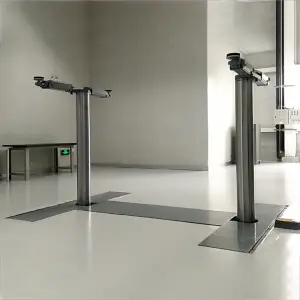
Exploring the Wonders of AC Series: An In-Depth Analysis of Alternating Current, Its Applications, and Future Innovations
****
Alternating Current (AC) is a fundamental concept in electrical engineering and power distribution, playing a critical role in our modern lives. From the electrical outlets in our homes to the vast power grids that supply energy to entire cities, AC series is integral to the efficient transmission of electricity. This article aims to delve into the features of the AC series, its historical significance, how it differs from Direct Current (DC), its various applications, and future innovations that could revolutionize the industry.
**Understanding AC Series and Its Historical Context**
The history of AC electricity dates back to the late 19th century, with the pioneering work of inventors such as Nikola Tesla and George Westinghouse. AC technology gradually replaced DC systems in the early 20th century due to its ability to transmit electricity over long distances more efficiently. The concept of alternating current allows the flow of electric charge to periodically reverse direction, making it especially suited for the power distribution needs of urban areas where vast amounts of energy must be supplied.
The AC series refers to a type of electrical circuit where components are connected along a single path, so the same current flows through all components. In this setup, when voltage is applied, it creates a sinusoidal wave pattern akin to the alternating current’s oscillations. This setup is essential in understanding how power is distributed and consumed.
**The Technical Differences Between AC and DC**
While both AC and DC are essential for different applications, their characteristics differ significantly. Direct Current (DC) flows consistently in one direction, making it suitable for low voltage applications such as batteries and electronics. In contrast, AC’s ability to change direction and voltage levels allows it to be transformed and transmitted across vast distances without significant power loss, making it the preferred choice for electrical grids.
Another critical aspect of AC is its frequency, measured in hertz (Hz). In most countries, the standard frequency for AC power is either 50 Hz or 60 Hz. This frequency affects how electric motors operate, the design of electronic devices, and how various systems interact with the power supply.
**Applications of AC Series in Everyday Life**

Exploring the Wonders of AC Series: An In-Depth Analysis of Alternating Current, Its Applications, and Future Innovations
The use of AC series represents a leap forward in how we approach electrical systems. Its prevalent applications can be observed in:
1. **Residential Power**: Homes predominantly utilize AC for lighting, heating, and powering appliances. When you plug a device into an outlet, it relies on the AC series to function effectively.
2. **Industrial Use**: Factories and large-scale production facilities employ AC motors for machinery due to their durability and efficiency. The AC series facilitates high rotational speeds, making it ideal for heavy-duty operations.
3. **Power Distribution**: AC is used in substations where voltage levels are adjusted for safe transmission over long distances. The ability to transform voltage levels reduces energy loss during transport.
4. **Renewable Energy**: Wind and solar energy systems often convert generated power into AC for grid compatibility. This is crucial for facilitating a smooth integration of renewable sources into existing power infrastructures.
**Future Innovations in AC Technology**
As technology evolves, so does the approach to AC series systems. Several innovations are paving the way for more efficient power distribution and consumption:

Exploring the Wonders of AC Series: An In-Depth Analysis of Alternating Current, Its Applications, and Future Innovations
1. **Smart Grids**: The integration of digital technologies can enhance the efficiency of AC networks. Smart meters and monitoring tools will provide real-time data, optimizing energy distribution and reducing waste.
2. **Energy Storage Solutions**: Advances in battery technology, including developing AC-compatible systems, are set to balance supply and demand more effectively. This will further improve the reliability of AC delivery, especially in renewable energy applications.
3. **Electric Vehicles (EVs)**: The shift toward electric mobility places new demands on the AC series, urging the industry to innovate in how electric charging stations function and manage power supply efficiently.
4. **Sustainable Design**: Innovations in power electronics and grid infrastructure promise greater efficiency in AC systems that minimize environmental impact and improve energy utilization.
In conclusion, the AC series is not just a technical specification but a dynamic and integral part of modern electrical systems. From its historical origins to its multifaceted applications across various industries, understanding AC systems is crucial for appreciating how we harness electrical energy today and where it might lead us in the future. As innovations in AC technology continue to emerge, they will undoubtedly shape the way we live, work, and interact with the environment.quickjack portable car lift



